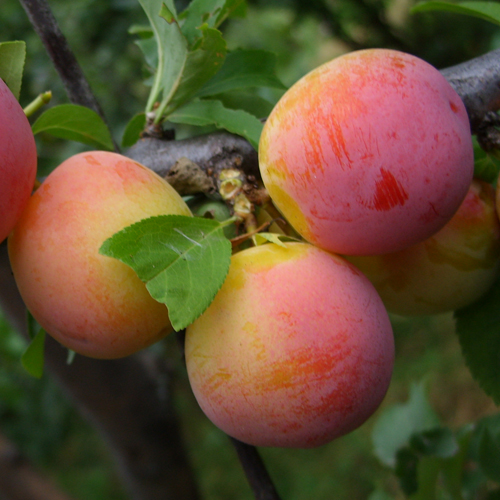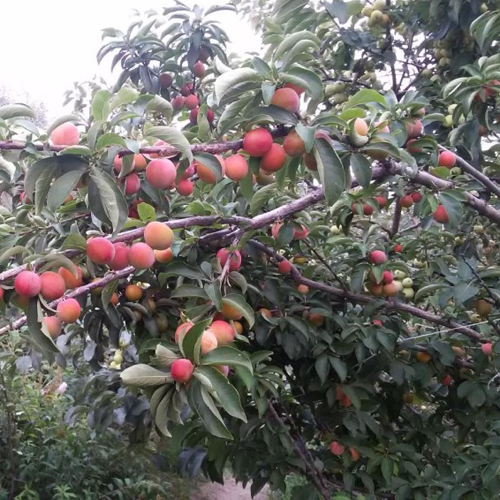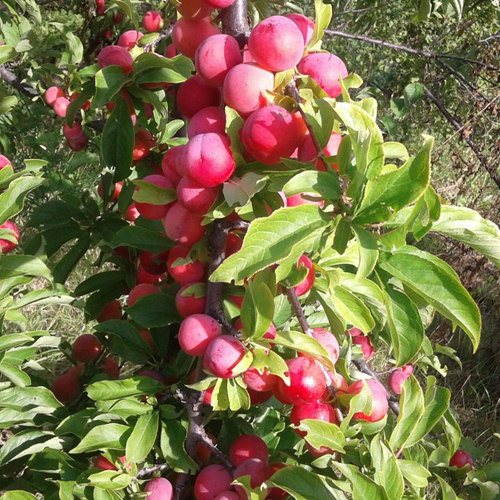Plum variety Altai Jubilee
Heat-loving plants, thanks to the labor of breeders, have long settled in places where the climate, it would seem, is not suitable for them at all. For example, the Altai Jubilee plum is considered the most valuable specimen in gardens located in the south of Western Siberia, in the Krasnoyarsk Territory, in the South Urals and in northern Kazakhstan. The variety was bred in NIISS, named after M.A.Lisavenko and located in the village of Chemal, in the mountainous zone of Altai. The authorship belongs to a group of scientists - V.S. Putov, N.N. Tikhonov and T.M. Pletneva (Tseptsaver). The new variety was obtained by selection among seedlings from free pollination of the Manchurian prune variety. It is believed that the Immunnaya plum became the paternal form of the novelty (from the crossing of the Ussuri Primorsky and American Shiro). Here is such an Altai Santa Barbara. The date of registration of our heroine is 1967, she has been on the state test since 1968, and it was entered in the State Register of Plants of the Russian Federation in 1974. Zoned across the West Siberian, East Siberian and Ural regions.

Description
Trees of medium to large vigor, about 3 or 5 meters high. The crown of the Altai jubilee is reverse-pyramidal, rounded, raised, of medium thickening. The stem is low. Shoots are straight, thick, with brownish-red bark and numerous large lenticels. Skeletal branches of the plum branch off from the trunk at an acute angle, the bark on them is gray-brown. The buds of this variety are characterized by large protruding subrenal bases. Leaf buds are conical in shape, flowering - rounded. Leaves are broadly oval, large - length 12.5 cm, width - 7 cm. The base of the leaf plate is wedge-shaped, the tip is sharp and curved. The leaf is slightly folded in the shape of a boat, with biconcate edges bent inward and a small assembly along the central vein. The surface is light green, without gloss and pubescence. Young leaves located at the top of the shoots are reddish and slightly pubescent. The petiole is of medium length, with a strongly pronounced anthocyanin coloration. Plum inflorescence consists of 2 - 3 flowers, which bloom before the leaves. The buds are white, the corolla of the opened flower is cupped. The petals are large, oval, 11 mm long and 8 mm wide, with an uneven surface and a wavy edge, white. The stigma of the pistil in the Altai Jubilee is below the anthers. There are 16 to 20 stamens. Sepals are narrow oval, with edges curved downward.

The fruits of the variety are medium-sized, weighing 14-16 grams, round or angular-rounded, with a well-defined seam. The height of the fruit and its diameter are 2.8 cm. The skin is dense, but not rough, smooth, does not contain bitterness. The main color is yellow-orange. An integumentary bright red blush occupies most of the surface of the fruit. There is a strong whitish waxy coating. The short stem is easily detached from the fruit. The pulp is loose, juicy, with a mild aroma, yellow-orange in color. The plum tastes good. 100 grams of pulp contains: dry matter - 19 - 20%, titratable acids - 1.4 - 1.7%, sugars - 10 - 12%, tannins - 0.6 - 0.8%, ascorbic acid - 6 - 7 mg, P-active compounds - 280 - 300 mg. The stone is oval, smooth, rather large. It separates from the pulp easily.
Characteristics
- Altai Jubilee belongs to the early-growing, yields a harvest 3-4 years after planting a one-year seedling;
- the plant is famous for its durability;
- fruits ripen in mid or late August;
- the yield is 30 kg per adult tree, but the culture is not stable in fruiting;
- adult plum has good winter hardiness, calmly withstands frosts down to -30 ° C. Fruit buds are more sensitive to cold temperatures;

- drought resistance is insufficient;
- in areas with abundant snow cover, the plant may suffer from damping;
- on calcareous soils containing an increased amount of lime, Altai Jubilee may suffer from chlorosis;
- the variety is relatively resistant to clasterosporium disease;
- Of the pests, the greatest danger is Maslovsky's seed eater. In an average degree, the hawthorn and moth can inflict losses;
- transportability is low, freshly picked fruits can be stored for a short time at a suitable temperature and humidity;
- the way of use is universal. Plum, due to its good taste, in its natural form is an excellent dessert. You can also make jam, marmalade, confiture, jam, tinctures and wine from it.
Pollinators
The Altai jubilee is self-fruitless. To set a crop, she needs pollen of other varieties. Suitable as a pollinator Honey and Bluefrey.
Planting and leaving
Grafting on the turnip is very popular as it grows well, but the side effect is overgrowth that will have to be dealt with. Plums are planted in warm regions in autumn, from September to early November. In cool places in spring, in March, until the buds begin to bloom. It is necessary to maintain a distance of 2 to 3 meters to neighboring plants. It is best to choose a sunny place for the Altai Jubilee, but even in a light partial shade, the harvest will be sufficient. But try to keep the site calm, or protected from the prevailing winds in winter, which dry out the wood. The groundwater level is not higher than 1.5 - 2 meters to the surface. If the site is located in a lowland and is often heated, the plant is planted on an artificial hill. Loam or chernozem are suitable from soils. Do not forget that this plum suffers from damping, so you need to take measures in preparation for winter. For example, "dry wintering" will reduce the risk of damage; for this, the trunk of the wintering plant is isolated from contact with snow or precipitation using a hollow cylinder made of material that does not get wet.
Altai Jubilee is distinguished by excellent taste, yield and relative resistance to clasterosporium disease. The disadvantages of the variety are the ability to lose crops due to the invasion of the seed eater and damping, which occurs in winters with heavy snowfalls.








